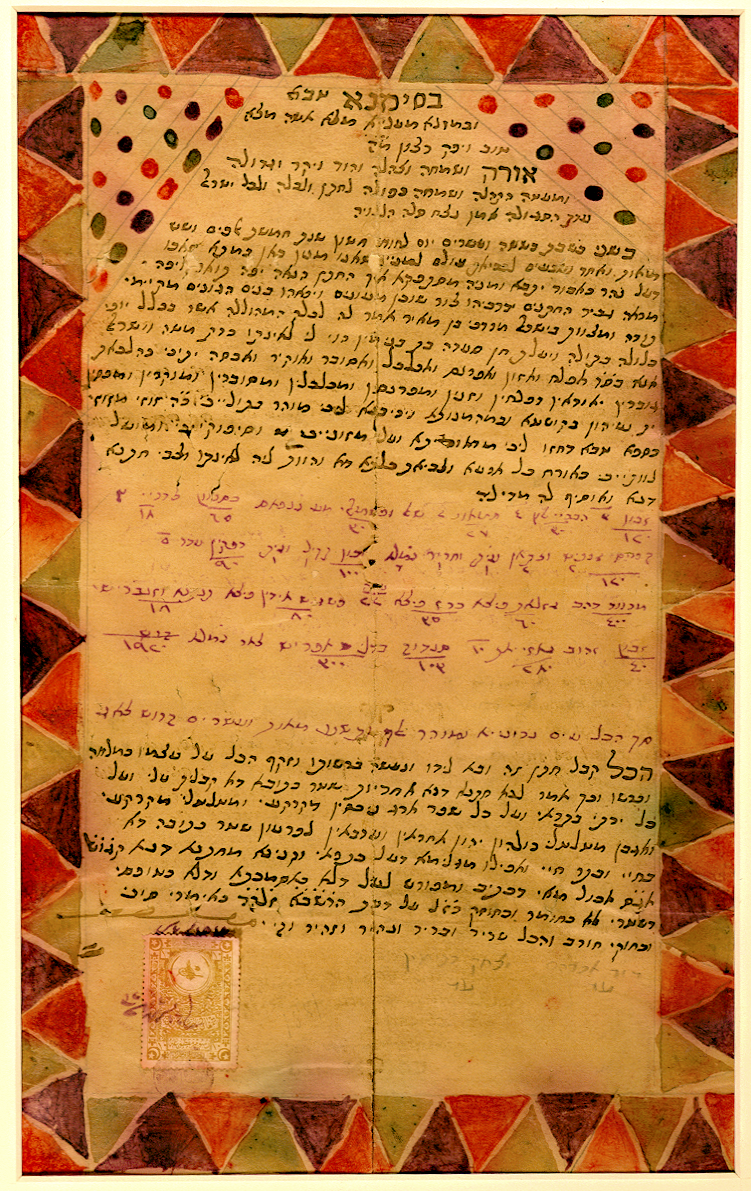Kurdish Ketubah from Zakho (Iraqi Kurdistan), 1910
This cheerful and naively decorated small ketubah from the superb Zucker Family Collection of Jewish marriage contracts, now being digitized by the Penn Libraries, attracted my attention from the first time I saw it. The reason is not surprising. It bears a striking resemblance to a ketubah hanging in our living room – a ketubah presented to me years ago by my late father when he learned that I was writing a thesis on the history of the ketubah and its illustration. This was no ordinary ketubah he gave me. It belonged to his parents, my grandparents, who both passed away when I was a child, a few years after the entire Jewish community of Zakho in Iraqi Kurdistan (northern Iraq) immigrated to the young State of Israel. The ketubah of my grandparents, inscribed and witnessed in Zakho in 1912, was obviously created by the same anonymous scribe and folk artist responsible for the present attractive document (Zucker Ketubah 6).
According to oral traditions, the Jews of Kurdistan claim they are descendants of the Ten Tribes who first arrived in this area after the Assyrian conquest of the Northern Kingdom of Israel (722 BCE). In fact, in this and every other Zakho ketubah, the city is described as situated on the bank of the river Khabour (כאן במתא זאכו דעל נהר כאבור יתבא), a tributary of the Euphrates. Zakho Jews believed this is the same river called חבור (Ḥabor) mentioned in the Bible (2 Kings 17:6), and identify their hometown with one of the sites to which the Israelites were exiled with the fall of the Northern Kingdom in the time of King Hoshea. Moreover, the Jews of Zakho, as many other Jewish communities of Kurdistan, speak a dialect of the ancient Aramaic language (often called Neo-Aramaic). The word for the bridal canopy (ḥupah) in our dialect is גנוניה (genunei) the same Aramaic term used in the Talmud (e.g., Nedarim 50b). The biblical word ḥupah (e.g., Joel 2:16) certainly implies a room where the bridal couple were united for the first time. While in other Jewish communities the ḥupah became a symbolic canopy raised over the bridal couple, Kurdish Jews preserved the ancient custom and made it as a room – a beautifully decorated bridal chamber with colorful woven fabrics, where the newlywed spent the seven days of the wedding festivities together (with a child seated between them) and guests came to visit them. This room thus served not only as a symbol of the wedding and fertility, but the actual “first home” of the groom and bride.
The contents of the dowry (some of it bought by the mohar or bride’s price raised by the groom’s family) brought to the couple’s new home is detailed at length in the ketubah. The list appears in the middle of the page written in a different colored, light ink. Each item is mentioned by its name in the local dialects (written in Hebrew letters). The monetary value of each item is written below it in Arabic numerals. The practice was for all the dowry items to be presented publicly on the wedding day for appraisal by experts. The Ḥakham would then inscribe the stated values, one by one, in front of all those present, onto the space on the page left for this purpose by the community’s expert scribe, who had drawn up the ketubah in advance. Finally, the community’s and the bridal couple’s expectations of what ideally should “fill” their new home is expressed in the wish that God will grant them “honest and respectable offspring, who observe the Torah and the commandments.”
